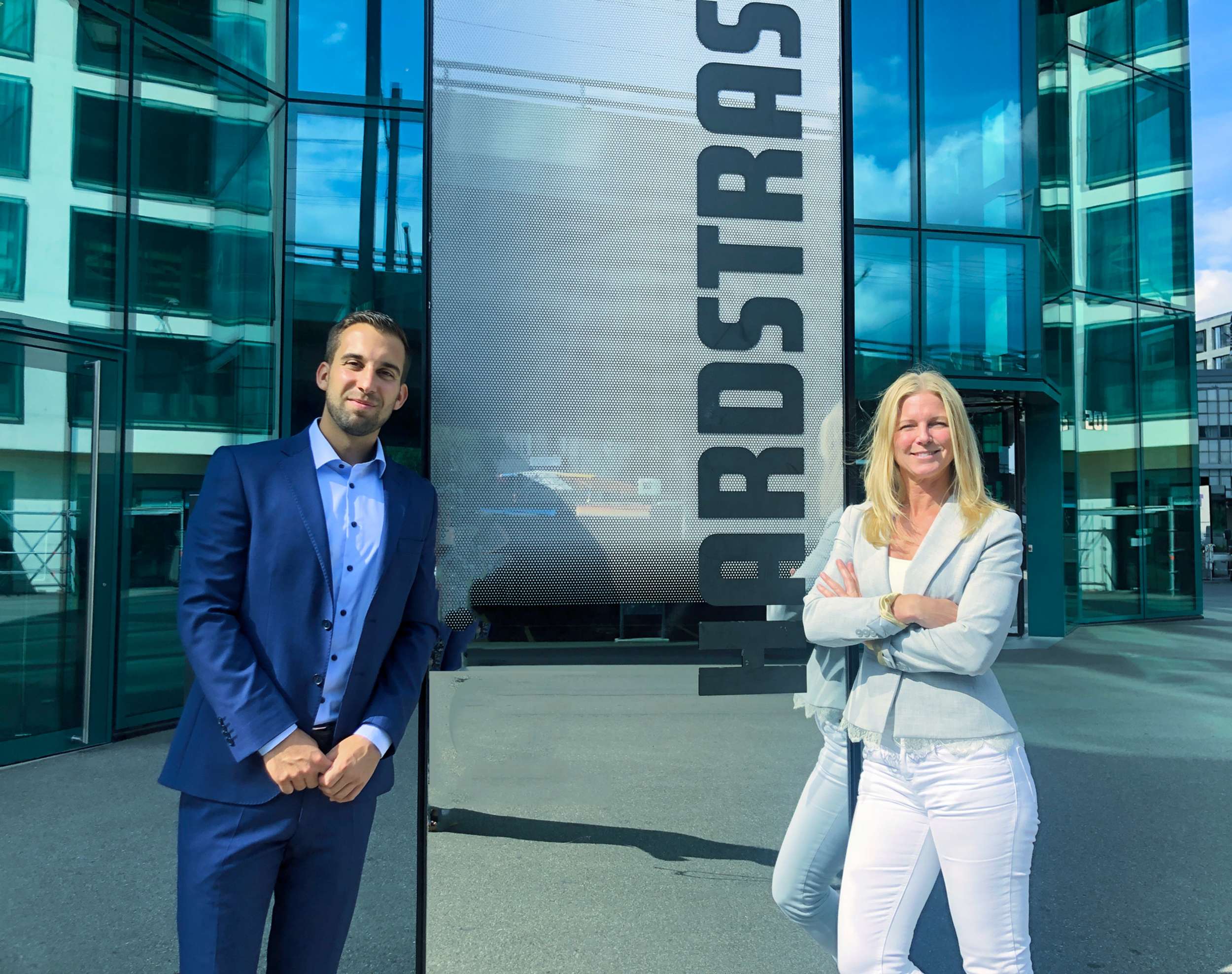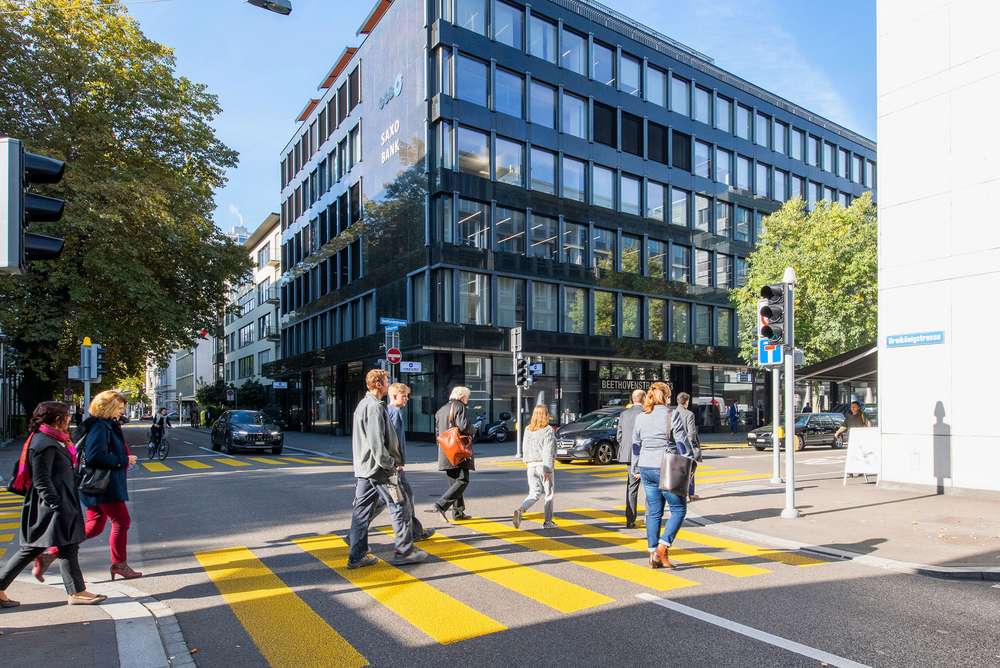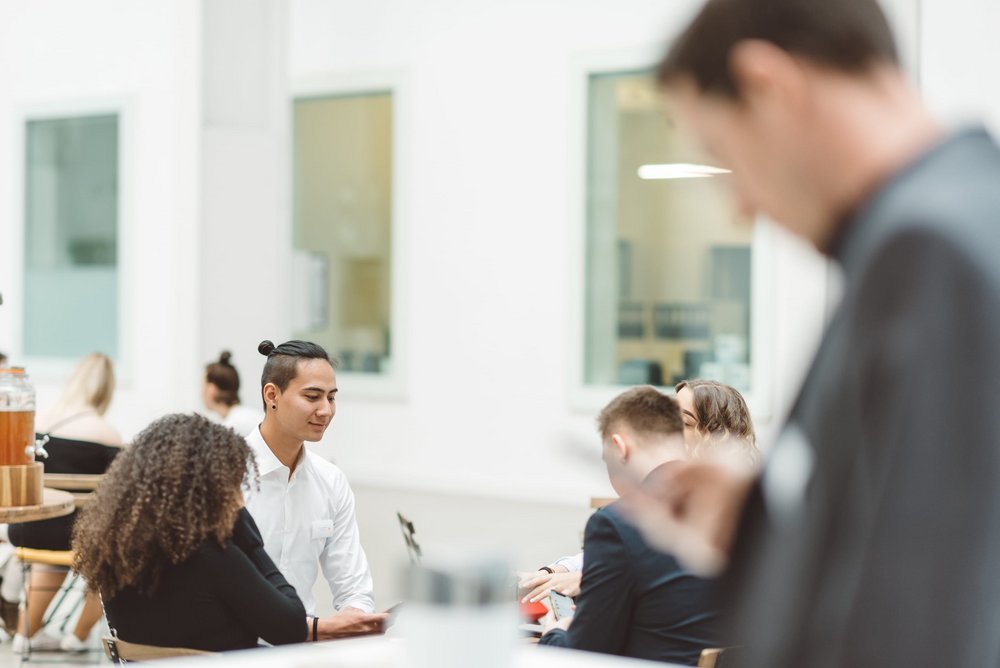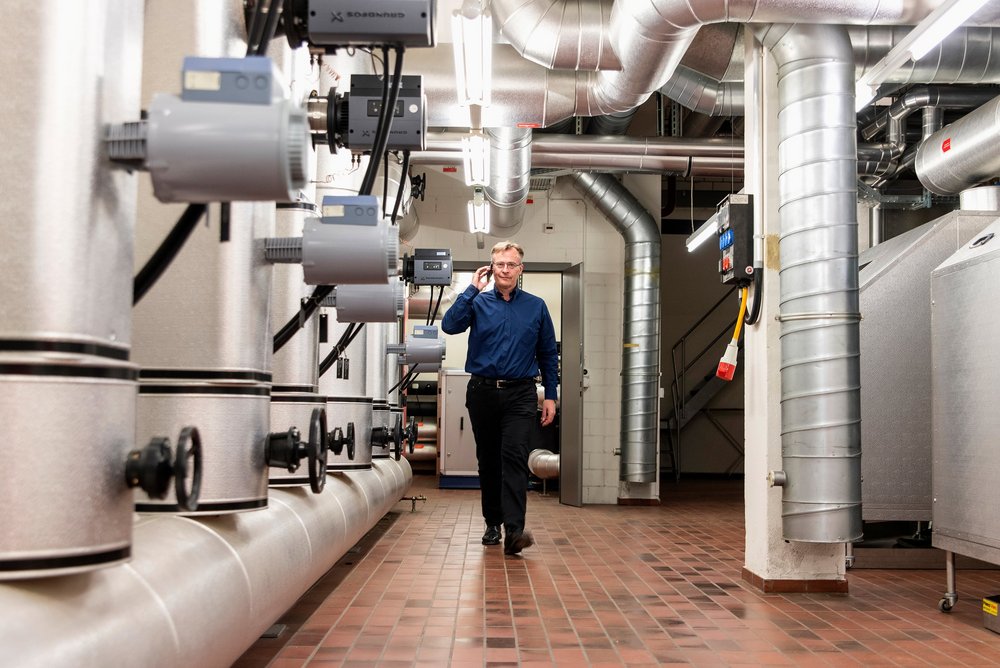Story
Job profile: Project manager Acquisition & Sales
Thank you both for giving us an insight into your work. How do you carry out the sale process for a property?
David: We follow the investment strategy laid down by our Board of Directors and Executive Board and always ensure that any potential property purchases are in line with our investment and portfolio strategy. So we are in constant contact with our colleagues in the Portfolio Asset Management, Development & Construction and Finance departments.
Mikaela: For a property purchase, we look at the location as well as issues like tenant structure, sustainability and future potential – both structural and financial. We generally pursue a long-term investment strategy. The process always starts with due diligence. During thorough due diligence, we examine the property from financial, legal and technical viewpoints. The aim of our work is to create a sound basis for a business decision.
How do you find your purchase properties?
Mikaela: A key element of our activities is monitoring the real estate market. We focus on finding appropriate purchase properties. It helps that we are the leading listed real estate company in Switzerland and therefore well connected in the industry and very well known among agents. A key part of our work is maintaining and constantly expanding our network.
David: We also monitor the overall economy, looking out for changes in the political and legal context. Relevant factors here include infrastructure works like railway and road projects, spatial planning developments such as densification trends and zoning changes, and the emergence of new commercial and business clusters.
Presumably you have to deal with numerous contractual issues in these transactions?
Mikaela: Absolutely. Ultimately, it’s also about defining and processing legal issues. That requires knowledge of purchase contracts, signing and closing processes, and notarial and land registry issues.
It’s important to mention that we don’t just process asset deals but also share deals. With a share deal, the structure of the transaction is far more complex, with a more involved due diligence process. As an example – a share purchase agreement is significantly more extensive than a pure property purchase agreement.
David: Every purchase or sale is different. There may be basic themes common to all transactions, but our process management is always tailored to the individual wishes of our negotiating partner as well as the specificities of the transaction property in question.
What about an affinity for finances – how important is that in your job?
Mikaela: Profitability, including net return and the financial viability of a property, are obviously fundamental. And then you need to be absolutely confident in analysing and processing the relevant key figures for a property. Overall, you could say that our team functions as a group of generalists who have knowledge in many different disciplines. And we are very well positioned at Swiss Prime Site Immobilien, so we can often come by specific expertise internally. Where necessary, we also work with external experts.
Which properties or plots do you sell?
David: We work with Portfolio Asset Management to regularly review our divestment strategy. Essentially, we only sell property that no longer corresponds to our investment strategy.
What points of intersection do you have within the Swiss Prime Site Group?
Mikaela: I can best explain that through the example of our group company Wincasa. We get significant support from Wincasa in the area of owner representation and mixed-use site management (MUSM). We also get technical due diligence assistance from Wincasa experts in the field of transaction management.
What do you like about your role?
David: It is highly varied. An affinity for the relevant key figures as well as a «nose» for the potential of a property or a plot are essential. For an acquisition project, we generally put together a complete business plan or a medium- to long-term property strategy. Generating and calculating a range of variants and future scenarios at the point of purchase is complex. We have to develop a certain feel for the potential of a property as a team. This comprehensive approach is challenging and at the same time highly appealing.
Mikaela: The agility of the company and the small teams allow us to think in new ways. We dare to take new paths, we innovate. As a project manager, I can be independent and entrepreneurial, acting as something like a «project CEO». This responsibility is something that I really value. I also find the close, straightforward collaboration within the team and with other departments as well as our group companies highly rewarding.



